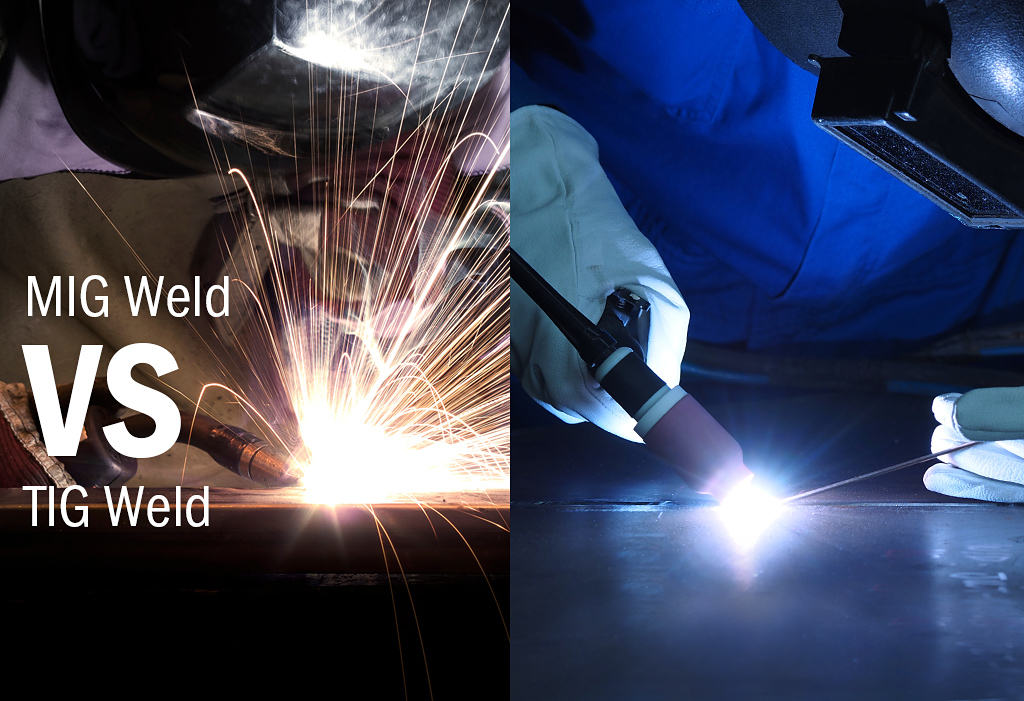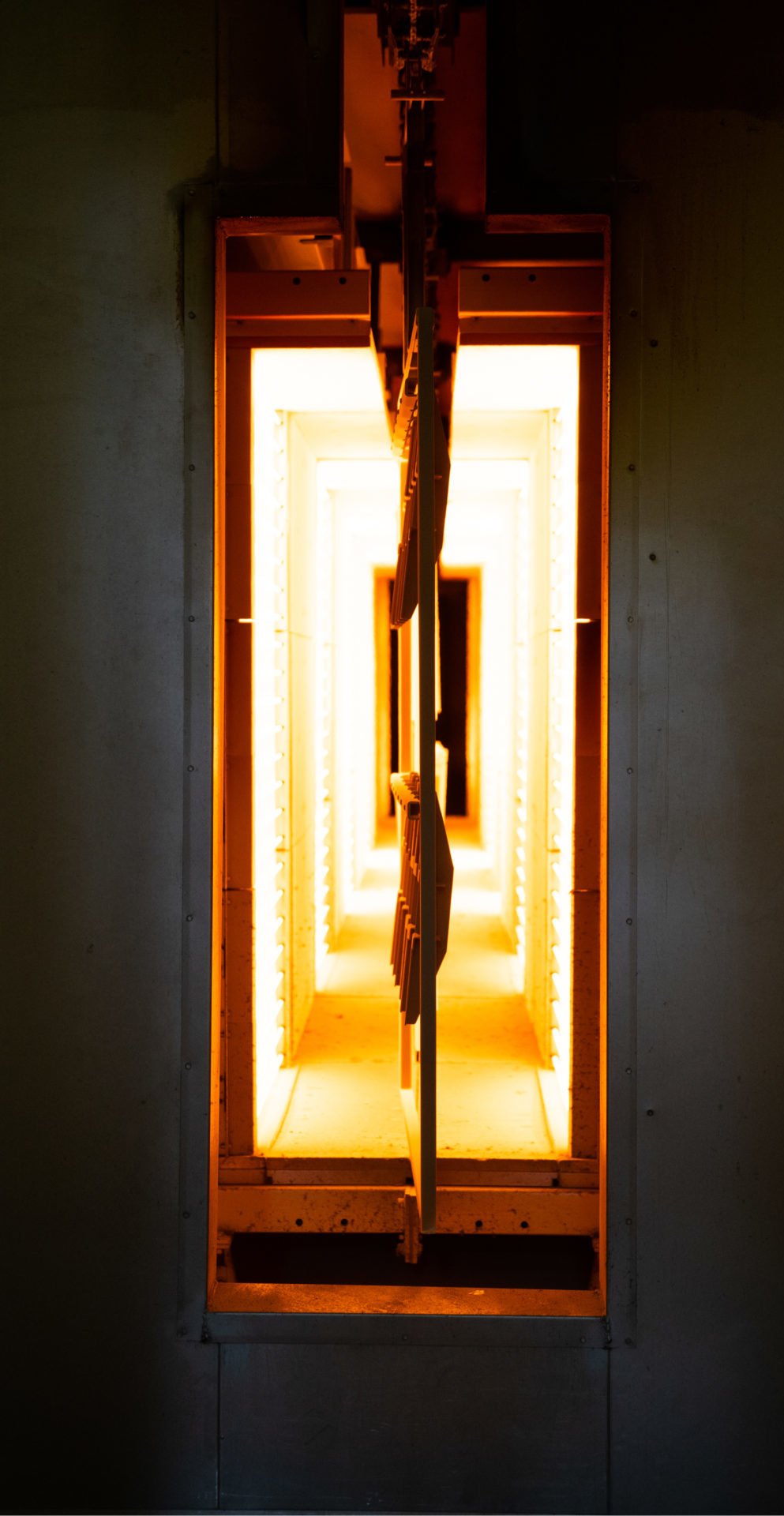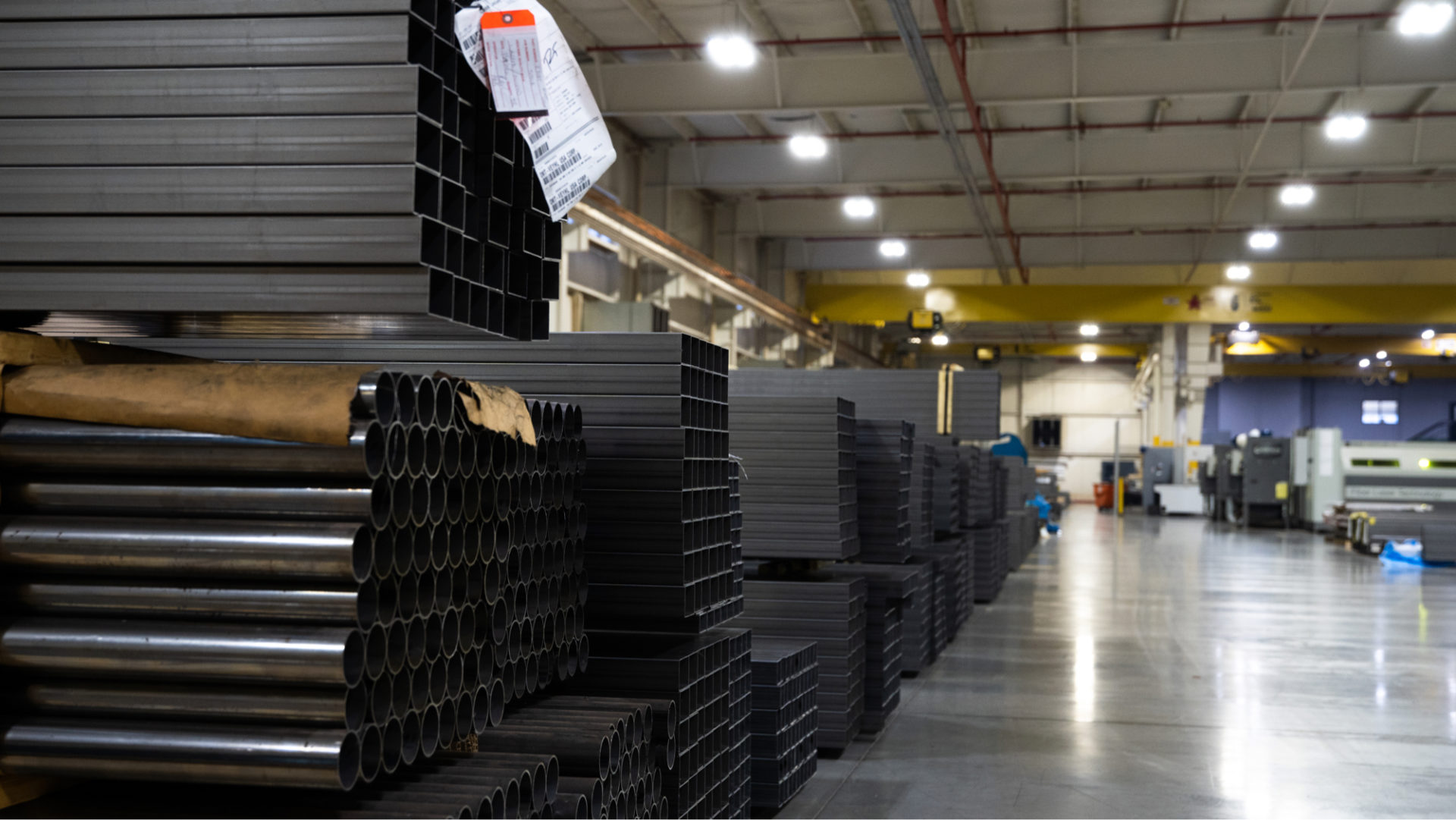
OMT-Veyhl is proud to be your Holland, Michigan metal fabricator, manufacturing contract furniture components from start to finish. As a part of this process, both welding and ensuring the best weld methods, play an important role.
Aside from our laser beam robots and our Cobots, OMT-Veyhl also has a group of hand welders and specialized welders who perform MIG and TIG welds.
Knowing that our team uses both, let’s dive into what makes MIG different than TIG and why you would choose one over the other.
The Process
MIG stands for “Metal Inert Gas” and, simply put, is the process of melting a wire electrode along with the metal workpiece to create a weld pool bonding the pieces together. The heating process is controlled by an electric arc and uses shielded gas to protect the weld process.
TIG, on the other hand, stands for “Tungsten Inert Gas” and fuses two metals together through the heating of both pieces. While both types use an electric arc, the main difference is that TIG weld does not include the melting of a separate metal (i.e., the wire filler metal).
MIG welding is a widely used method and is a speed-driven choice.
TIG welding is known to be the more difficult method to master, but it allows for complete control over the weld. TIG, therefore, is a detailed focused method.
The Benefits
As mentioned above, MIG welding is quicker to perform, making it a first choice if applicable. Saving time, also saves manufacturing expenses, creating a cost-effective product. Speed, however, is not the only reason why one may choose MIG welding.
Versatility, for example, is one of those additional benefits. MIG welding is more effective with thicker materials, as well as with a wider variety of metals. It’s an easy welding style to learn and works well in most projects. Through the general nature of MIG welding, it also aids as a filler when necessary.
Unfortunately, in line with all methods of welding, MIG welding does have its downfalls. MIG welds are not necessarily clean or precise. These welds need to be sanded and are better for areas that are in less-visible areas of the product. The good news is that TIG welding steps up in the places where MIG welding might fall short.
TIG welding creates precise, aesthetically pleasing bonds. Unlike MIG welds that create a lot of spark and excess material, TIG welds are very clean. Therefore, for automotive, art, or office furniture, for example, TIG would be the best choice.
Of course, TIG welding is a slower option and requires a high level of skill from the welder. Which, is why it is important to weigh all the factors before choosing a weld method.
Ultimately, we know that both MIG and TIG are crucial to a manufacturing facility and to a variety of projects. Next time you receive a product, think of the detailed welding choices that went in to make it happen!


Recent Comments